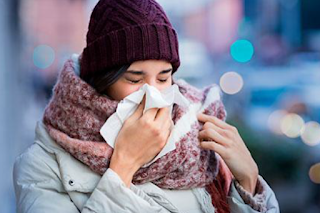- Get link
- X
- Other Apps
- Get link
- X
- Other Apps
Learn what the Keto Flu is, why it happens, and how to manage symptoms effectively while transitioning into ketosis for a smooth and successful keto journey.
Keywords:
- What is the Keto Flu?
- Keto Flu symptoms
- How long does Keto Flu last?
- Keto Flu remedies
- How to prevent Keto Flu
- Keto diet side effects
- Managing Keto Flu naturally
- Keto Flu headaches
- Best foods for Keto Flu
- Keto diet transition tips
What Is The Keto Flu?
The Keto Flu is a temporary set of symptoms that some people experience when starting a ketogenic diet. It happens as the body shifts from burning carbohydrates to fats for fuel. While it’s not an actual flu, the symptoms can make beginners feel sick, sluggish, and fatigued.
Common Symptoms of Keto Flu
- Fatigue and Weakness: Low energy due to a sudden decrease in carb intake.
- Headaches: Caused by dehydration and electrolyte imbalances.
- Irritability and Brain Fog: Due to low glucose levels affecting cognitive function.
- Muscle Cramps and Aches: Due to electrolyte deficiencies (especially sodium, magnesium, and potassium).
- Digestive Issues: Constipation, nausea, or bloating from increased fat intake.
- Dehydration and Dizziness: Due to loss of water and essential minerals.
Causes of Keto Flu
- Carbohydrate Withdrawal: Your body is used to burning carbs for energy. Removing them suddenly leads to withdrawal-like symptoms.
- Electrolyte Imbalance: Losing water weight rapidly also flushes out sodium, potassium, and magnesium, leading to cramps and fatigue.
- Dehydration: The ketogenic diet has a diuretic effect, increasing urination and leading to water loss.
- Low Energy Adaptation: Your body takes time to switch to burning fat for fuel, causing initial tiredness.
- Reduced Sleep Quality: Changes in diet and energy metabolism can affect sleep patterns.
How to Fight the Keto Flu & Recover Faster
Here are some science-backed ways to reduce Keto Flu symptoms and adapt smoothly:
1. Increase Electrolytes
- Drink electrolyte-rich fluids such as bone broth, coconut water, or add pink Himalayan salt to meals.
- Take a magnesium supplement to prevent muscle cramps.
- Eat potassium-rich foods like avocado, spinach, and salmon.
2. Stay Hydrated
- Aim to drink 2-3 liters of water daily.
- Add a pinch of salt to your water to prevent dizziness and headaches.
3. Consume More Healthy Fats
- Boost intake of avocados, nuts, olive oil, and coconut oil to sustain energy levels.
- Gradually increase fat intake instead of making a sudden switch.
4. Eat Enough Protein
- Protein helps in muscle recovery and prevents excessive fatigue.
- Choose high-quality protein sources like eggs, chicken, and grass-fed beef.
5. Reduce Intense Exercise Temporarily
- Avoid intense workouts for the first 1-2 weeks of keto.
- Opt for light exercises like walking, stretching, or yoga.
6. Get Enough Sleep
- Aim for 7-9 hours of quality sleep every night.
- Establish a bedtime routine and avoid blue light before sleeping.
7. Take a Multivitamin
- A high-quality multivitamin can fill in nutritional gaps and support overall wellness.
8. Increase Fiber Intake
- Add low-carb fiber sources like flaxseeds, chia seeds, and leafy greens to prevent digestive discomfort.
How Long Does Keto Flu Last?
Keto Flu typically lasts between 3 to 7 days, but in some cases, it may last up to two weeks. By following the tips above, you can reduce the duration and intensity of symptoms.
Pro Tip: Don’t Give Up!
The Keto Flu is temporary, and once your body fully adapts, you’ll experience higher energy levels, better mental clarity, and improved fat-burning. Stick with it, and soon you'll feel amazing!
FAQs About the Keto Flu
1. What is the Keto Flu and why does it happen?
The Keto Flu is a collection of symptoms that occur when the body shifts from burning carbs to fats for fuel, leading to dehydration, electrolyte loss, and energy dips.
2. How long does Keto Flu last?
It usually lasts 3 to 7 days, but symptoms can be managed with proper hydration and electrolyte intake.
3. Can I prevent Keto Flu before starting keto?
Yes! Start by reducing carbs gradually before going full keto, increasing electrolytes, and staying hydrated.
4. What is the fastest way to get rid of Keto Flu?
Drink electrolyte-rich fluids, eat more healthy fats, and ensure adequate sleep for a quick recovery.
5. Should I stop the keto diet if I get Keto Flu?
No, the symptoms are temporary. Instead, make dietary adjustments to support your body during the transition.
Labels for the Post
- Keto Flu Remedies,
- Keto Diet Side Effects,
- Electrolyte Balance on Keto,
- Keto Transition Guide,
- Low-Carb Diet Tips,
- Keto Beginner’s Guide,
- Ketosis Symptoms,
- Keto Lifestyle
Links for Authority:
Here are some useful high-authority websites.
- Healthline – Keto Flu Symptoms & Remedies
- Medical News Today – How to Manage Keto Side Effects
- Ruled.me – Complete Guide to Keto Flu
- Diet Doctor – Tips to Overcome Keto Side Effects
Suggested YouTube Video
🎥 Watch this video for more tips on beating the Keto Flu:
🔗 The Keto Flu: What It Is & How To Fix It
Final Thoughts
The Keto Flu may feel like a setback, but with the right approach, you can ease the transition and start enjoying the full benefits of the ketogenic lifestyle. Follow these strategies, stay hydrated, and give your body time to adjust.
Are you experiencing Keto Flu symptoms? Let us know in the comments how you're managing it! 💬👇
Electrolyte Balance on Keto
Keto Beginner’s Guide
Keto Diet Side Effects
Keto Flu Remedies
Keto Lifestyle
Keto Transition Guide
Ketosis Symptoms
Low-Carb Diet Tips
- Get link
- X
- Other Apps

Comments
Post a Comment